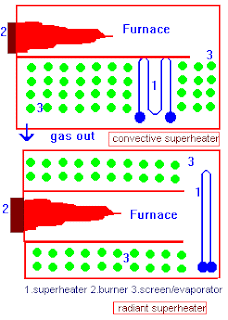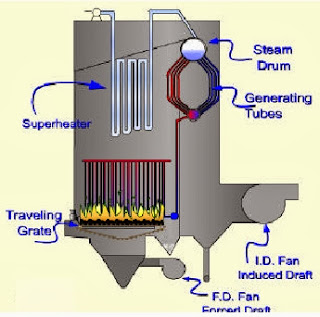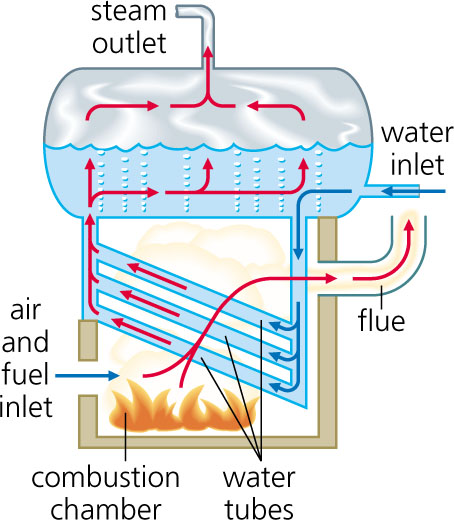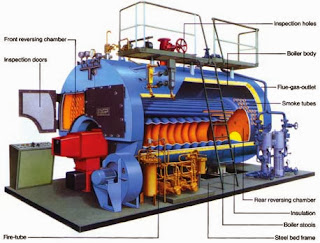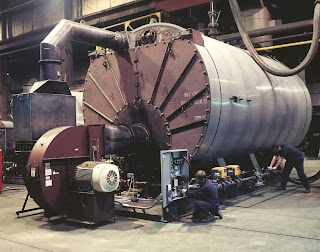Evaporative Condensers
The vapor to be condensed is circulated through a condensing coil, which is continually wetted on the outside by a recirculating water system. Air is pulled over the coil, causing a small portion of the recirculating water to evaporate. The evaporation removes heat from the vapor in the coil, causing it to condense.
The evaporative condenser has a cabinet with a water-sprayed
condenser, and it usually has one or more fans. The excess heat is
removed by evaporating water. In an evaporative condenser the primary
coolant of the cooling system is cooled, which is the opposite of a
cooling tower. Evaporator condensers are more expensive than dry coolers
and are primarily used in large cooling systems or systems where the
outdoor temperature is high. In many locations around the world,
regulations limit the physical size of a cooling system and this in turn
limits the use of evaporative condensers.
Spraying a condenser with water exploits the fact that the dew
point temperature is lower than the air temperature and that a wet
surface transfers heat more efficiently.
1 Hot primary coolant
2 Cold primary coolant
3 Cold water
4 Water sprinklers
5 Centrifugal fan
Key benefits of Evaporative Condensers
- Low system operating costs: lower condensing temperatures for a more compact compressor using less power
-
Low refrigerant charge, costs and environmental impact minimised
-
Space-saving: up to 50% area savings compared to comparable air-cooled installations
Other TopicsIC engine, Method of Ignition, mechanical Engineering, English books,Photoshop tutorials,Harry potter,Best 100 english books,IC engine,Metal Casting,Mechnical Previous Years Gate Question Papers ,Mechanical-old-question-paper,Milling Quiz,Forging Quiz,Cold Extrusion,Hot Extrusion,CLutch,Wet Clutch,Introduction to Flywheel,Flywheel: FACTOR, Governors ,Thermal Power Plant,Pulverizer,Boiler,Fire Tube Boiler,Water Tube Boiler,Packaged Boiler,Superheater,Condenser,Types of Condenser,Air-cooled condenser types,Water-Cooled Condensers


